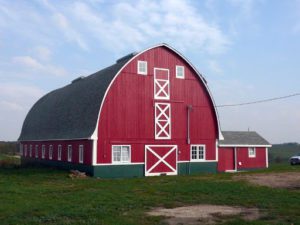 After being handed soaring new property value assessments, Lambton County farmers are now turning to their upper-tier municipal government for a bit of tax relief over the next four years.
After being handed soaring new property value assessments, Lambton County farmers are now turning to their upper-tier municipal government for a bit of tax relief over the next four years.
Officials with the Lambton and Ontario Federations of Agriculture made the case to county council on Wednesday for a reduction to the agricultural farm class’s tax ratio over the next four years in light of the significant property value increases their members were handed by the Municipal Property Assessment Corporation (MPAC) in 2016.
As a result of these new assessments, the taxable value of Ontario farmland has now increased by an average of nearly 70 per cent, according to the Ontario Federation of Agriculture (OFA).
What this potentially means for Ontario farmland owners – according to the OFA – is that more of the municipal tax burden will be shifted onto their shoulders over time unless their municipal governments take action.
On Wednesday, the Lambton Federation of Agriculture – representing more than 2,100 farm families – joined a growing number of farming organizations across Ontario lobbying their respective municipal governments for tax relief.
Lambton farmland owners could be on the hook to pay an additional share of $470,000 in county taxes this year – raising their total share of county taxes to $4.1 million from $3.6 million in 2016 – unless the County of Lambton rejigs its tax ratio system for the agricultural property class.
Members of the Lambton Federation of Agriculture are calling for the county’s current agricultural tax ratio of 0.25 to be dropped to 0.22 in 2017, 0.2 in 2018, 0.18 in 2019 and 0.17 in 2020.
“This is not a tax break,” said Ben LeFort, senior policy advisor with the Ontario Federation of Agriculture.
“The farmers would still be paying the same proportion of total taxes. Their taxes would continue to increase but at a more reasonable rate.”
County finance staff are preparing a report for an April 19 council committee meeting that analyzes the request in detail, but John Innes, the county’s general manager of finance, is already cautioning that the request could have an impact on other property tax classes.
“If we reduced the ratio just on the farm class, then what that does then is it has the impact of increasing the ratios on every other class of property – directly or indirectly,” he said.
Communities, like Chatham-Kent, Durham Region and Hamilton, have reduced their tax ratios for their agricultural class of properties over the last few years.
“In most cases where it was happening, it was where the farmland was incidental to the jurisdiction that had the right to make the tax policy change,” Innes said Thursday.
“Where you’ve had large amounts of farmland and the farmland is the primary source of revenue for the municipalities you haven’t seen a lot of changes.”
Oxford County recently reduced its tax ratio for its agricultural property class, Innes noted, but the municipality is home to the Cami plant and other “significant industrial assessment that allows them to offset that.”
“The simple truth here in Lambton County is that outside of (Sarnia), Petrolia and to some extent St. Clair Township, the vast majority of our assessment and the tax base for these municipalities is either farm or residential,” Innes said.
His report – headed to council’s morning committee– will also look at what the impact would be if the county provided the same reduced tax ratio to other property classes.
Several Lambton County politicians said Wednesday that their municipalities are struggling with a lack of sustainable funding from the province, and in turn, must rely on their local tax bases.
Warwick Township Mayor Todd Case said his municipality has lost $800,000 in funding since 2012 from the Ontario Municipal Partnership Fund (OMPF), the province’s main transfer payment to municipalities that’s in the midst of a transition.
“I think we need to work together when it comes to getting that OMPF put back into place because that would do amazing things as far as helping the municipalities find their paths from a financial standpoint,” Case told LeFort Wednesday.
LeFort has met to discuss lobbying strategies with staff at both the western and eastern Ontario wardens’ caucuses.
He said the message he has received is the province isn’t interested in discussing the OMPF program but could be receptive to talking about a “roads and bridges fund.”
“That might be the terms of the day the province is comfortable with,” he said.
No matter what the funding program is called, Case said rural Ontario needs a sustainable funding commitment from the province – and rural Ontario will continue pushing for it.
“We still continue to work on lobbying the government to try to find sustainable funding for rural Ontario. We are the forgotten cousin when it comes to the province of Ontario, and we remind them of that every day.”
~Barbara Simpson~
Sarnia Observer
